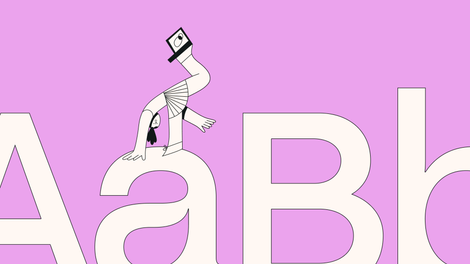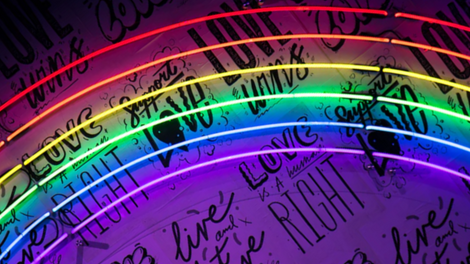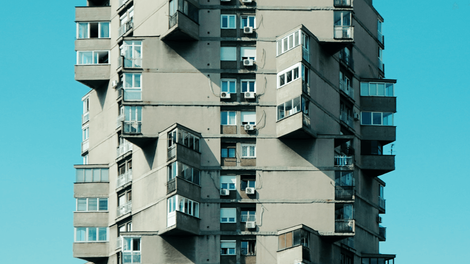No, you’re not seeing things, and your screen isn't broken.
It's just a style of digital art: Glitch Art.

Glitch Art is becoming increasingly popular and common in the design world lately, even though it's been around for fifty years.
And while it might look like a mistake, we predict it will stick around for a while. Digital culture is taking over everything, and that includes the art world. Enter Glitch Art.
In the age of technology, using coding to morph an image into an aesthetically pleasing error-ridden form of itself is one of the coolest types of digital art we’ve seen.
In this article, we'll explain what Glitch Art is, the movement's history, and give you some design tips on creating your own glitch art design.
Jumpstart your ideas with Linearity Curve
Take your designs to the next level.
What is glitch art?
Glitch Art is a distinctive visual style in its use of artistically curated digital distortions.
These intentional errors create a unique and futuristic design style.
Normally, these brief interruptions to our films or video games are annoying interruptions that quickly solve themselves and disappear from the screen. Glitch Art explores what it looks like when those glitches don’t self-correct.
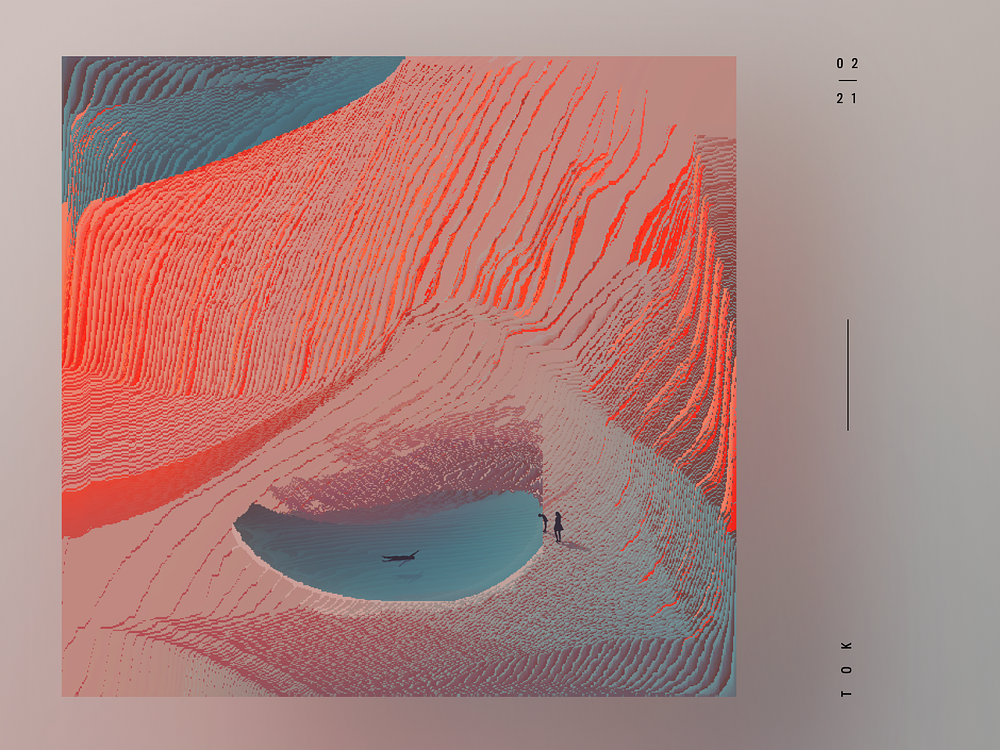
Glitch Art was actually created by accident. When you first see a work of Glitch Art, you might think the image file was saved incorrectly, but it is a curated digital art piece.
It’s crazy to think that an accidental distortion caused by a digital crash led to an entire genre of modern art. The bold distortions and haphazard nature of Glitch Art are what make it so subversive and distinct.
This playful nod to digital culture is precisely the kind of thing that you wouldn’t expect to see in an art gallery, and for that very reason, it is popular today.
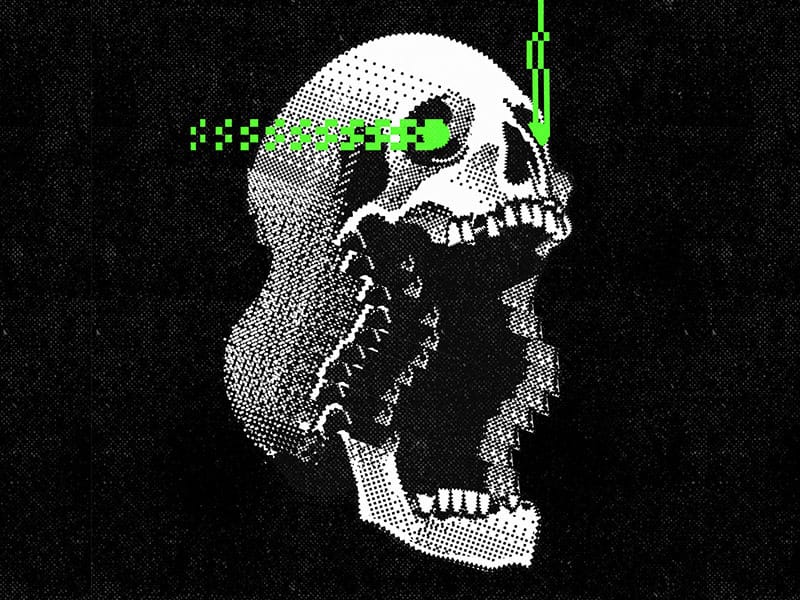
The term glitch art doesn’t just encompass static digital art but music and visual art as well. This abstract art form can combine all three mediums for a truly mind-bending experience.
Characteristics of glitch art include pixelation, light leaks, double exposure, noise and grain, and color degradation. Let’s chat about what each of these terms means.
Pixelation
Displaying a bitmap at such a large size that individual pixels are visible, making the image appear blurry.
Light leaks
Causing a hole or gap in the body of a camera allowing light to “leak" into the image, resulting in lens flare and washed-out areas.
Double exposure
The (typically accidental) superimposition of two exposures over each other, creating a single layered image.
Noise and grain
The appearance of texture in film is due to small particles being present in an image, leading to a grainy or poor messy quality.
Color degradation
The degradation of color quality in an image, either naturally over time or due to damage from the sun or exposure to elements.
All of these are examples of how photography or digital art can go wrong, but Glitch Artists use these “mistakes” to their advantage to create unique and distinct art.
Before we go any further, let’s dig into the history of Glitch Art.
The history of the glitch art movement
The glitch art movement became popular in the music and art scene of the late 1970s and has become a popular motif in design.
Glitch Art was inspired by movements like Cubism, an early-20th-century avant-garde movement made famous by artists like Pablo Picasso and Salvadore Dali.
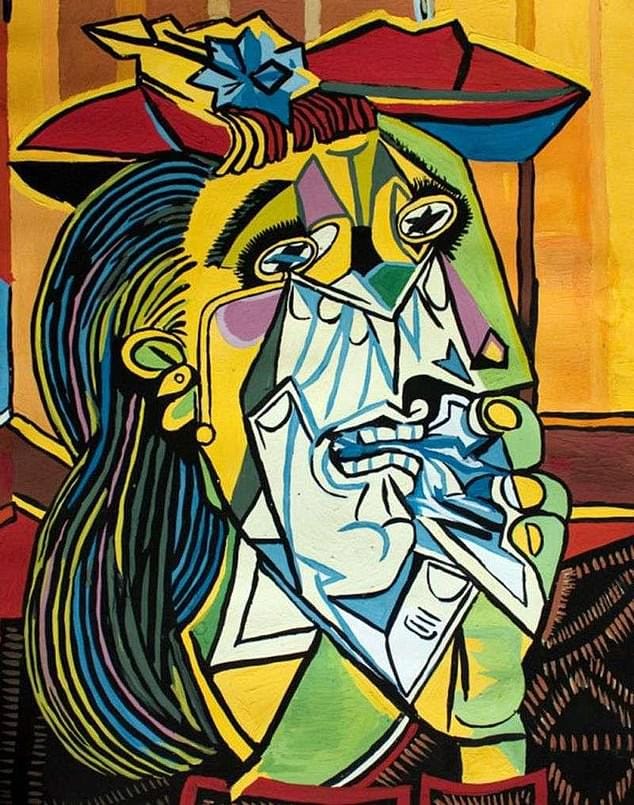
In 1978, Digital TV Dinner was created by visual artists Raul Zaritsky, Jamie Fenton, and Dick Ainsworth. This is a classic glitch art piece and one of the earliest in the movement.
In the 90s, glitch music became an experimental favorite for DJs and musicians. Using design elements popular in the Glitch Art movement, more and more artists started to see how art could be melded with technological advances.
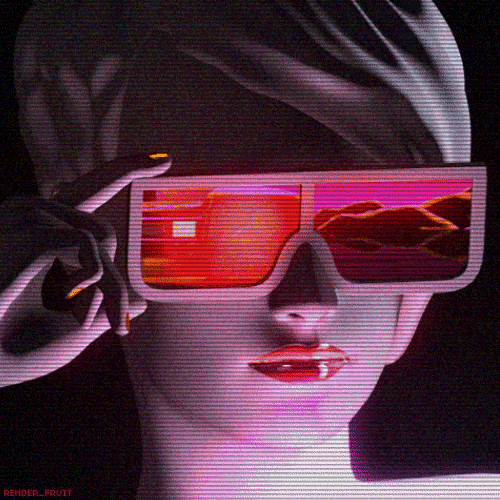
One early movement in the Glitch Art movement, "net.art", was created by the art collective JODI. JODI was started by Joan Heemskerk and Dirk Paesmans, who were known for using errors messages and digital glitches on their website as a form of Glitch Art.
This influenced the later Glitch Art practice of data bending and data moshing. These techniques create a glitch effect where frames that should change don't.
Classic Glitch Art can be reminiscent of the late 90s, and can also have that early-2000s feel that many brands are chasing lately.
Glitch Art is sure to stick around and likely grow even more popular with the ever-rising popularity of digital media and video games. Be ready to see a lot of Glitch Art over the next few years.
Now, let’s get into the fun stuff—looking at examples of Glitch Art.
Famous glitch artists
Many digital artists are well-known in the glitch movement for their exemplary work.
Below we’ll discuss some of the most famous Glitch Artists and give examples of glitches in their art. We’ll also discuss the elements of design they use in their work that make it a piece of Glitch Art.
Rosa Menkman
Rosa Menkman is an expert on Glitch Art.
This Dutch visual artist specializes in glitch art and has created some of the most well-known works in the movement.
Menkman said she was inspired to create her own Glitch Art after seeing an exhibit by the Dutch/Belgium artist collective JODI.
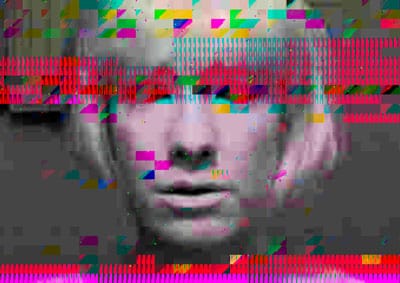
In the piece above, she used the classic elements of pixelation and light leaks to create a stunning image.
She investigates video compression, feedback, and glitches in her work to create her Glitch Artworks. They’re truly spectacular. She is also the author of The Glitch Moment(um).
Raul Zaritsky, Jamie Fenton, and Dick Ainsworth
These three artists created the classic glitch video "Digital TV Dinner" (1978) that used the Bally video game console system.
The video was made by striking the $300 Bally video game console with a fist or fingers while trying to write the menu and recording the results.
Check out the video below. It’s truly a classic piece of Glitch Art.
Daniel Temkin
Daniel Temkin is a photographer, programmer, and artist who received an MFA from the International Center of Photography / Bard College.
In this piece, Temkin combines the art of optical illusion with Glitch art to create a stunning and complicated design.
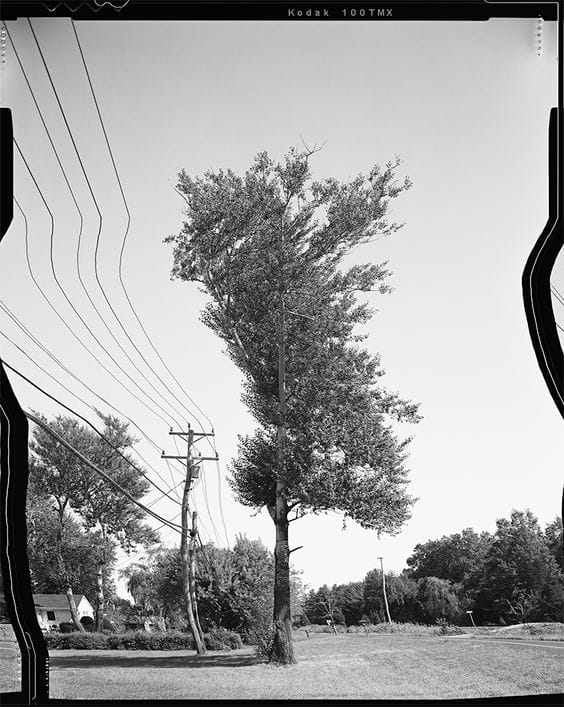
His award-winning blog focuses on the history of programming languages as a form of art, and if you’re looking to learn more about Glitch Art, his blog is a great place to start.
Temkin has written about programming languages and coding as a form of art for major publications, and his work has been a critic’s pick for Art News, the New York Times, and the Boston Globe.
Ready to create brand assets that pack a punch?
Visit our Academy for free marketing design courses.
Sabato Visconti
Sabato Visconti is a Brazilian new media artist who graduated from Amherst College.
This design is one of our favorites. The overlaying, distortion, and pixelation playfully juxtaposes the small portion of the female figure’s face that is left intact.
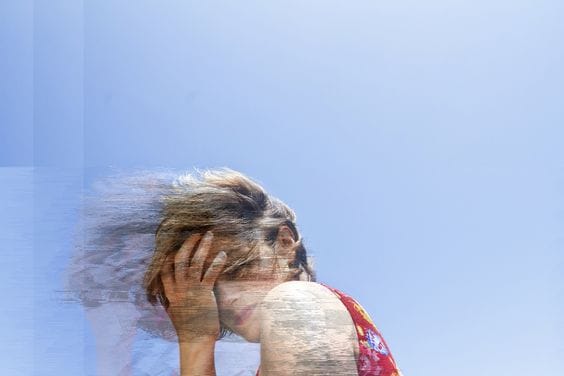
Visconti started experimenting with glitch art in 2011. His art pieces focus on social conditioning, mass surveillance, and necropolitics.
Nick Briz
Nick Briz is a Chicago-based new media artist, educator, and organizer. He is known for his creative work in the Glitch Art movement.
The piece below, TRIANGULATION, features colorful abstraction and geometric aesthetics reminiscent of a video game.
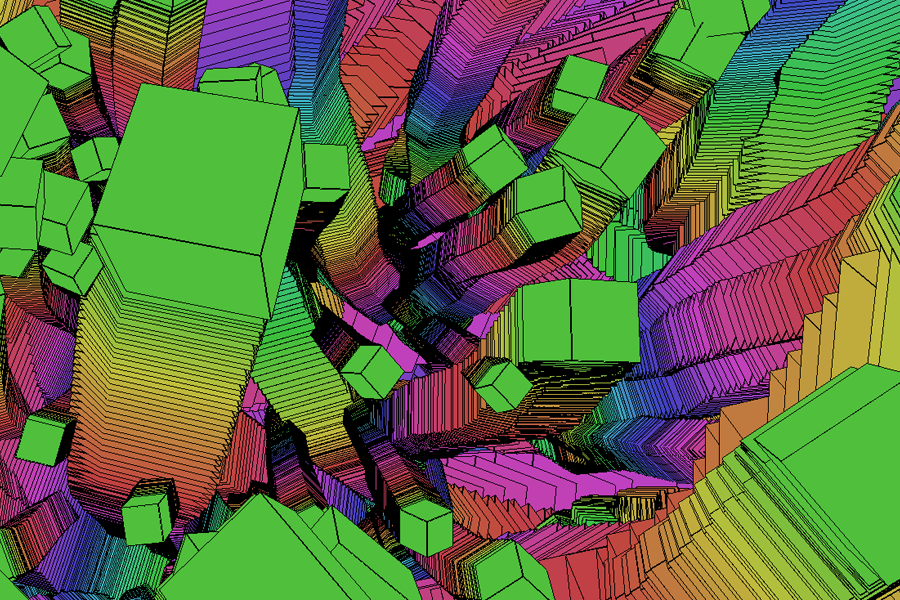
Briz now teaches at the Marwen Foundation and the School of the Art Institute of Chicago.
Ready to start designing?
Are you ready to create your own Glitch Art Design? We’re here to help.
Glitch art is especially relevant for tech companies and social media brands. If you’re a designer looking to become a Glitch Artist, we’ve got you covered.
With our design tips, you can create your own Glitch Art with Linearity Curve (formerly Vectornator) or whatever design software you typically use.
Jumpstart your ideas with Linearity Curve
Take your designs to the next level.
If that sounds complicated, don’t worry, multimedia artist Georg Fischer created a script that makes this process easy.
With this generator, you can slide bars to adjust to the size and type of glitch in your designs and tweak the results in real time. It’s super easy to use and has some pretty incredible results.
If you want to make additional tweaks, save your file and import it into Linearity Curve to add different effects like text, additional colors, or drawings.
Check out our Learning Academy for more design tips and tricks for using Linearity Curve to create your designs. Plus, follow us on socials and mention us in the work you create with the Curve tool!
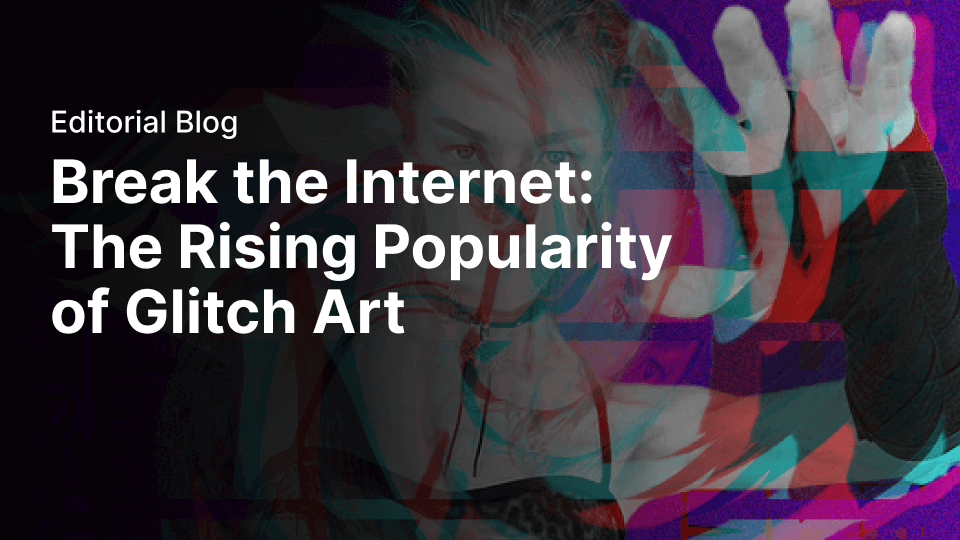
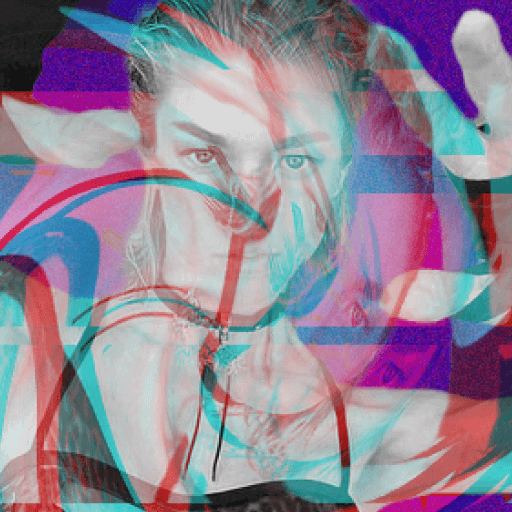
Jumpstart your ideas with Linearity Curve
Take your designs to the next level.
Share this!
Ben Barnhart
Ben is a Content Lead for Linearity living in Berlin. His hobbies include board games, cooking, reading, and writing.


:quality(75))
:quality(75))



:quality(75))
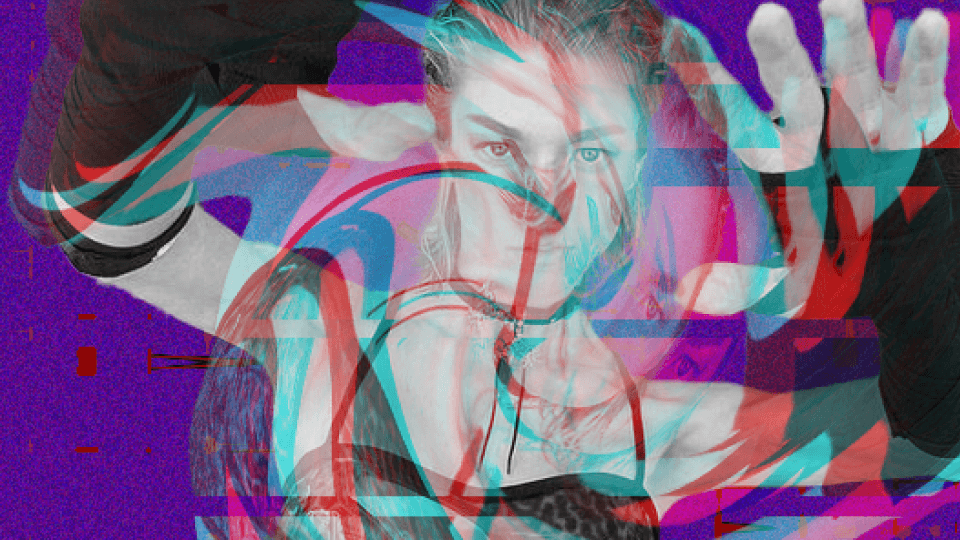
:quality(75))
:quality(75))
